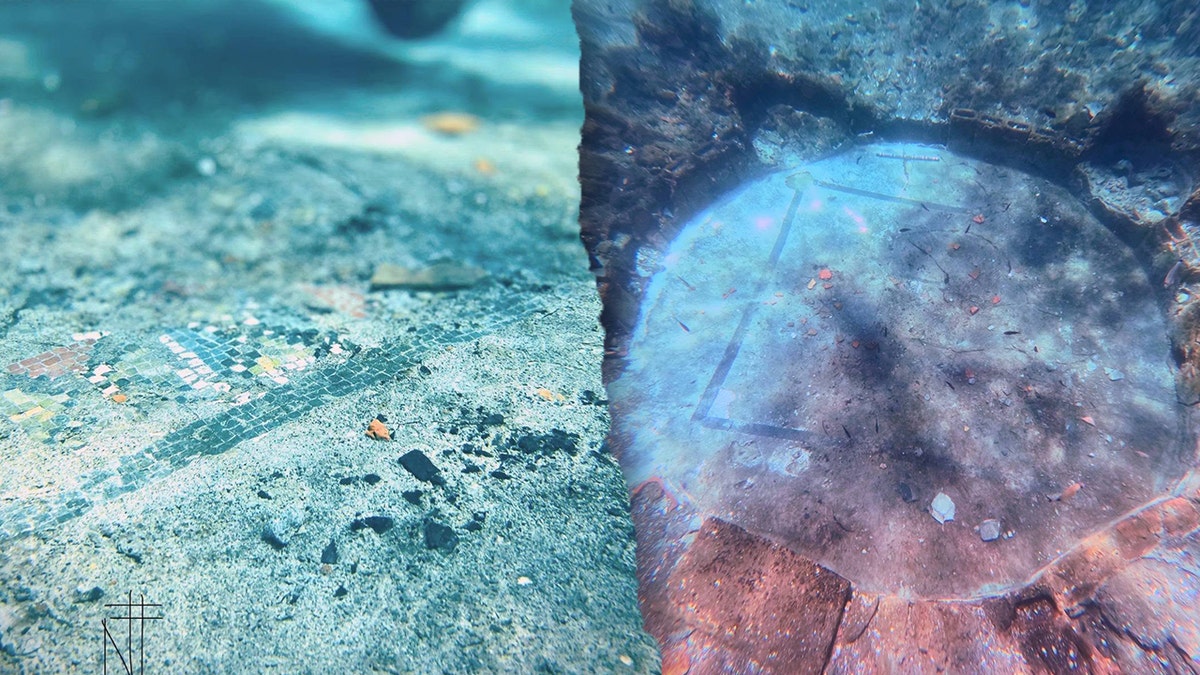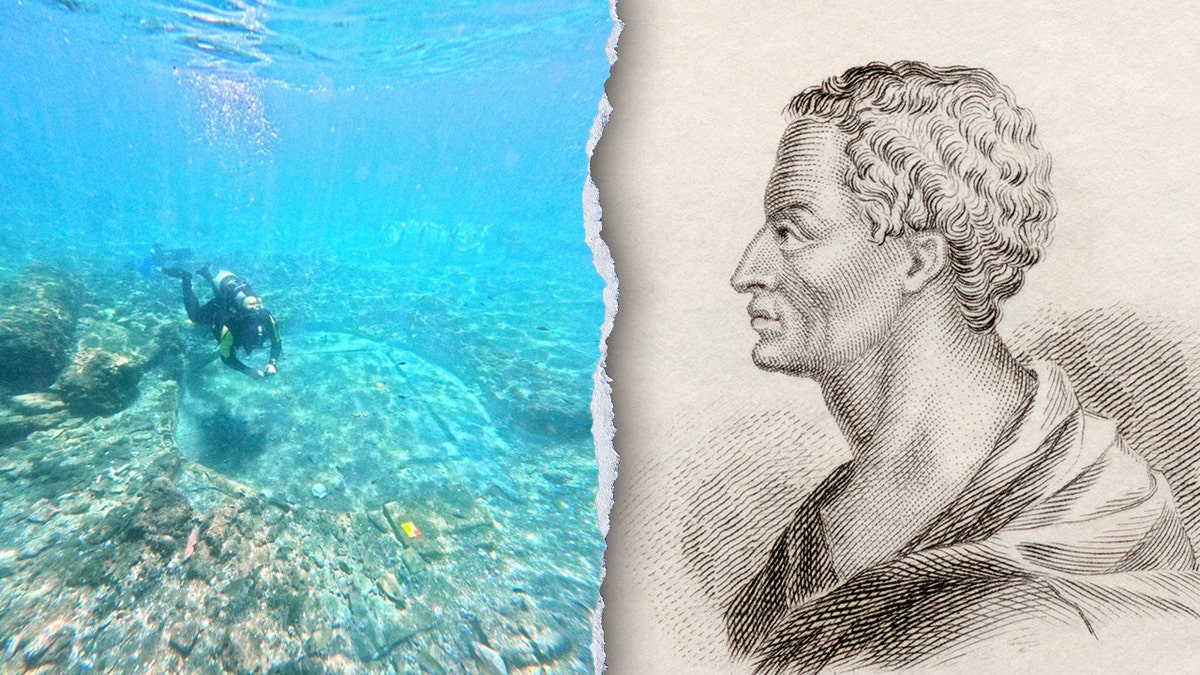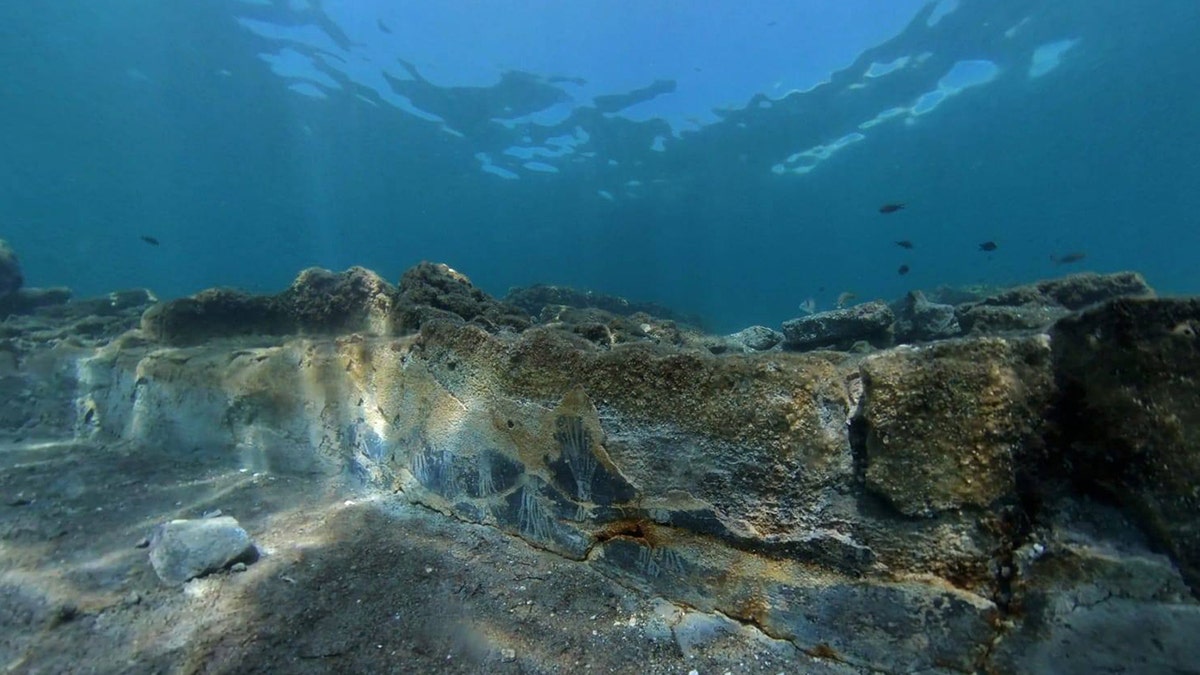

Italian archaeologists recently discovered an ancient Roman bathhouse submerged underwater – and it may have belonged to Rome's greatest orator.
The Campi Flegrei Archaeological Park, located in Naples, announced the discovery on Aug. 6. Though the site of the bathhouse was first identified in 2023, it was only recently documented.
In a translated Facebook post, officials said the thermal complex was found around 10 feet underwater in Portus Julius, a port famous for being the first permanent Roman naval base.
ANCIENT ROMAN APARTMENT BUILDING FOUND BENEATH PUBLIC SQUARE AMID SUBWAY CONSTRUCTION
Officials believe it may have belonged to Marcus Tullius Cicero, the legendary Roman statesman who lived from 106 B.C. to 43 B.C.
Cicero is famed for being a staunch advocate of Rome's Republic, as well as for translating Greek philosophical texts into Latin.

Campi Flegrei Archaeological Park announced that divers excavated a submerged Roman bathhouse about 10 feet underwater at Portus Julius near Naples, Italy. (Parco Archeologico Campi Flegrei)
The bathhouse was built before the area was developed into a naval base in 37 B.C. Local officials believe it may have belonged to Cicero, based on ancient records.
ANCIENT ROMAN 'PERFUME GARDEN' BLOOMS AGAIN NEARLY 1,900 YEARS AFTER VESUVIUS ERUPTION
"Current research suggests that we may be looking at the baths of Cicero's villa, known from historical sources," the post said.

Officials said the underwater thermal complex may be linked to Marcus Tullius Cicero, the famed orator who lived from 106 B.C. to 43 B.C. (Parco Archeologico Campi Flegrei; Universal History Archive/Universal Images Group via Getty Images)
The bathhouse also featured cutting-edge engineering, such as its suspensurae system, which allowed its mosaic floors to heat up.
"This, together with the tubular structures along the walls, allowed hot air to circulate, creating a true sauna, or laconicum," the statement added.

Officials said the complex lies roughly 10 feet underwater, giving archaeologists a rare opportunity to study heating systems and mosaics in situ. (Parco Archeologico Campi Flegrei)
Officials also said they recovered ceramic materials "of particular importance," which may offer clues about how the structure was built – and how it was destroyed.
For more Lifestyle articles, visit foxnews.com/lifestyle
"Work will continue throughout the autumn with the restoration of the mosaic floor, [which is] partly encrusted with mortar remains, and of the small but significant traces of wall paintings," the post concluded.

"Current research suggests that we may be looking at the baths of Cicero's villa, known from historical sources," officials said. (Parco Archeologico Campi Flegrei)
Roman bathhouses – which functioned as important community spaces in antiquity – are still being discovered across Europe and Asia Minor today.
In Turkey, archaeologists recently unearthed an ancient Roman bathhouse that still preserved traces of its original engineering design.
In Rome's Appian Way Regional Park, excavators found a Roman bathhouse-turned-church that functioned as an ancient baptistery.
